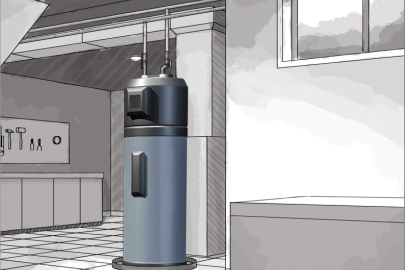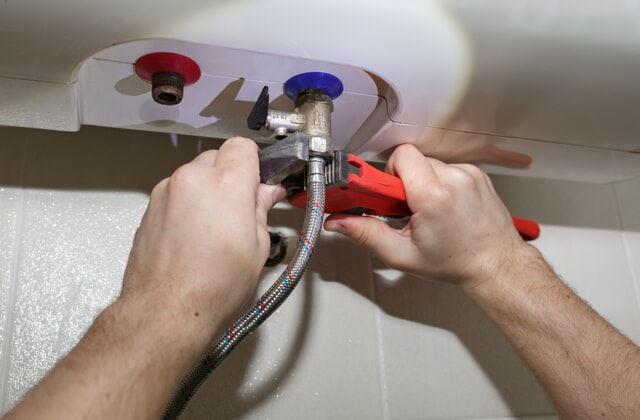Important Tips on Maintaining Your Home's Hot Water SystemMaking Sure Durability of Your Home's Hot Water System: Care Tips
Important Tips on Maintaining Your Home's Hot Water SystemMaking Sure Durability of Your Home's Hot Water System: Care Tips
Blog Article
Just how do you really feel on the subject of Tips on Maintaining a Water Heater?

Warm water is essential for day-to-day convenience, whether it's for a rejuvenating shower or cleaning meals. To guarantee your warm water system runs successfully and lasts much longer, normal upkeep is vital. This short article offers functional ideas and understandings on exactly how to preserve your home's warm water system to prevent interruptions and expensive repairs.
Introduction
Maintaining your home's hot water system could appear overwhelming, yet with a couple of straightforward steps, you can guarantee it runs efficiently for several years ahead. This overview covers whatever from comprehending your hot water system to DIY upkeep suggestions and understanding when to hire professional help.
Importance of Keeping Your Warm Water System
Routine upkeep not just prolongs the life expectancy of your hot water system yet likewise ensures it runs effectively. Overlooking upkeep can cause reduced efficiency, greater power expenses, and even early failing of the system.
Indicators Your Warm Water System Requirements Maintenance
Recognizing when your hot water system requires interest can avoid major concerns. Watch out for indicators such as inconsistent water temperature level, unusual sounds from the heating unit, or corroded water.
Flushing the Hot Water Heater
Purging your hot water heater eliminates sediment build-up, boosting effectiveness and prolonging its life.
Monitoring and Replacing Anode Rods
Anode rods stop deterioration inside the storage tank. Evaluating and replacing them when broken is crucial.
Complex Problems Calling For Expert Aid
Examples consist of major leakages, electrical issues, or if your hot water heater is regularly underperforming.
Regular Professional Upkeep Conveniences
Professional upkeep can consist of comprehensive examinations, tune-ups, and ensuring compliance with security criteria.
Inspecting and Adjusting Temperature Settings
Readjusting the temperature level settings makes sure optimum efficiency and safety.
DIY Tips for Upkeep
You can execute several maintenance tasks yourself to keep your hot water system in top problem.
Looking for Leakages
Routinely check pipelines and links for leakages, as these can lead to water damage and higher expenses.
Recognizing Your Warm Water System
Prior to diving right into upkeep jobs, it's helpful to understand the fundamental elements of your warm water system. Normally, this consists of the hot water heater itself, pipelines, anode poles, and temperature level controls.
Month-to-month Maintenance Tasks
Regular monthly checks can help catch minor concerns prior to they rise.
Evaluating Pressure Relief Valves
Testing the pressure relief valve ensures it functions appropriately and prevents excessive stress build-up.
Shielding Pipelines
Shielding hot water pipes reduces heat loss and can save energy.
When to Call a Professional
While do it yourself upkeep is valuable, some concerns call for specialist know-how.
Final thought
Routine maintenance of your home's warm water system is necessary for effectiveness, longevity, and price financial savings. By adhering to these pointers and recognizing when to look for expert help, you can ensure a reliable supply of warm water without unanticipated interruptions.
Water Heater Maintenance: The Basics
Maintaining your water heater will ensure it operates efficiently and has a longer lifespan. Neglecting regular maintenance can lead to costly repairs and an even bigger chunk of your savings if you have to replace it sooner than necessary. But there’s good news: Most water heater maintenance tasks are relatively simple and easy for homeowners with basic DIY skills.
Flush the Water Heater
Over time, sediment and minerals can build up in the tank, reducing its efficiency and potentially causing damage. To flush the tank, turn off the power or gas supply, attach a hose to the drain valve near the bottom and open the valve to drain the water until it runs clear. Ideally, flush the tank annually.
Replace the Anode Rod
The anode rod is a sacrificial metal rod that helps prevent corrosion inside the tank. Inspect and replace it every three to five years or per the manufacturer's recommendation. To replace the anode rod, turn off the power or gas supply, drain a few gallons of water from the tank, unscrew the old rod and replace it with a new one. If the anode rod is significantly corroded or covered in calcium buildup, it's a sign the water heater may need to be replaced soon.
Tune-Up
A yearly tune-up can help identify potential issues and ensure your water heater operates at peak efficiency. This typically involves checking the thermostat, burner assembly (for gas heaters) and any other components specified by the manufacturer. During a tune-up, the technician may also clean the burner and adjust the pilot light (for gas heaters) or examine the heating elements (for electric heaters).
How to Maintain Your Water Heater
Insulate the tank. Insulating the tank can improve energy efficiency and reduce heat loss, saving you money on energy bills. You can purchase precut insulation blankets designed specifically for water heaters or use standard fiberglass insulation wrapped securely around the tank. Check the temperature. The recommended water temperature for most households is around 120 degrees Fahrenheit (49 degrees Celsius). Higher temperatures can increase energy costs and potentially cause scalding. Use a kitchen thermometer to check the temperature at the faucet nearest the water heater. Monitor water pressure. Excessive water pressure can strain the water heater and cause leaks or even tank failure. Install a pressure-reducing valve if necessary. The ideal water pressure range is between 60 and 70 PSI (pounds per square inch). Test the temperature and pressure (T&P) relief valve. The T&P relief valve is a safety feature that releases pressure if the tank gets too hot or the pressure builds up too high. Test it annually by lifting the lever and allowing a small amount of water to release. Replace the valve if it doesn't release water or reseal properly. Check for leaks. Regularly inspect the tank, pipes and fittings for leaks or corrosion. Deal with issues promptly to prevent further damage. Even a small leak can lead to significant water damage over time. Consider a tankless water heater. If your traditional tank-style water heater is nearing the end of its lifespan ( typically 10 years), consider replacing it with a tankless water heater. These units heat water on demand, reducing standby energy losses and potentially saving you money on your energy bills. Schedule professional maintenance. While homeowners can perform many water heater maintenance tasks, it's still a good idea to schedule professional maintenance every few years. A plumber or HVAC technician can thoroughly inspect the unit, identify potential issues and ensure it operates safely and efficiently. https://www.homeserve.com/en-us/blog/home-improvement/hot-water-heater-maintanence/

Hopefully you liked our part about How to Maintain Your Water Heater & Prolong its Life. Thanks a lot for taking time to read our piece. Don't hesitate to pause to distribute this blog post if you appreciated it. Thanks a bunch for being here. Come back soon.
Book Appointment Report this page